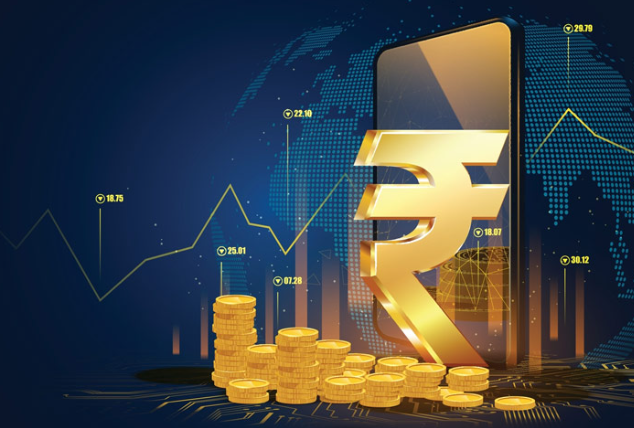On Tuesday, the Indian rupee gained 13 paise to reach 82.57 against the US dollar in early trade. This increase was attributed to the weakening of the American currency from its previously elevated levels, as well as a positive trend in domestic equities and fresh foreign fund inflows that supported investor sentiments.
According to forex traders, the domestic unit opened at 82.59 against the dollar before gaining ground and touching 82.57, marking a rise of 13 paise over its previous close. However, in initial trade, the rupee also touched a low of 82.61 against the US currency.
This increase in the rupee’s value came after a decline on Monday, when the rupee fell by 12 paise to close at 82.70 against the US currency. Meanwhile, the dollar index, which measures the greenback’s strength against a basket of six currencies, fell 0.16 percent to 103.18.
In the global oil benchmark, Brent crude futures declined 0.70 percent to USD 86 per barrel. In the domestic equity market, the 30-share BSE Sensex was trading 315.74 points or 0.52 percent higher at 60,747.58, while the broader NSE Nifty advanced 37.75 points or 0.21 percent to 17,808.65.
Foreign Institutional Investors (FIIs) were net buyers in the capital market on Monday, purchasing shares worth Rs 1,322.39 crore, according to exchange data.
Sriram Iyer, Senior Research Analyst at Reliance Securities, noted that “global investors will now take cues from the US consumer inflation data due after Asian market hours on Tuesday.” He added that “this print will be closely watched by the currency and bond as well as the equity markets, an upward surprise on inflation will be a concern and will prompt the Fed to keep higher and for a longer period of time.”
On the domestic macroeconomic front, retail inflation breached the Reserve Bank of India’s upper tolerance limit and reached a three-month high of 6.52 percent in January, primarily due to higher prices in the food basket, including cereals and protein-rich items.
Overall, the increase in the value of the rupee was welcomed by investors, who saw it as a positive sign for the Indian economy. However, concerns about inflation and global economic factors still remain, and investors will continue to monitor these closely in the coming days and weeks.
This article includes sponsored content. The views expressed are those of the sponsor and do not necessarily reflect the official policy or position of our publication.

